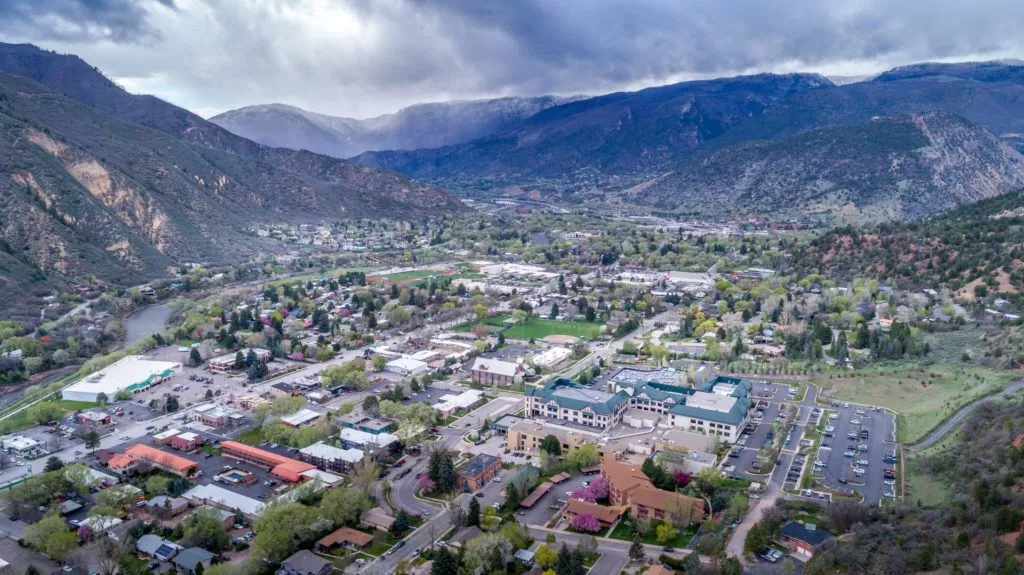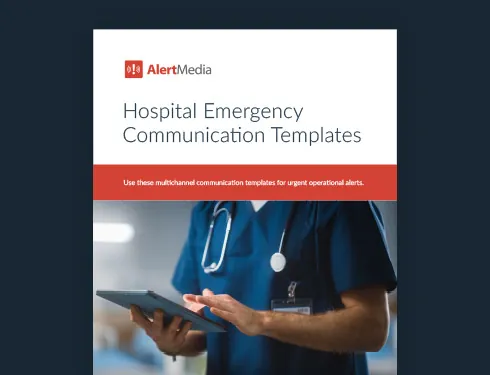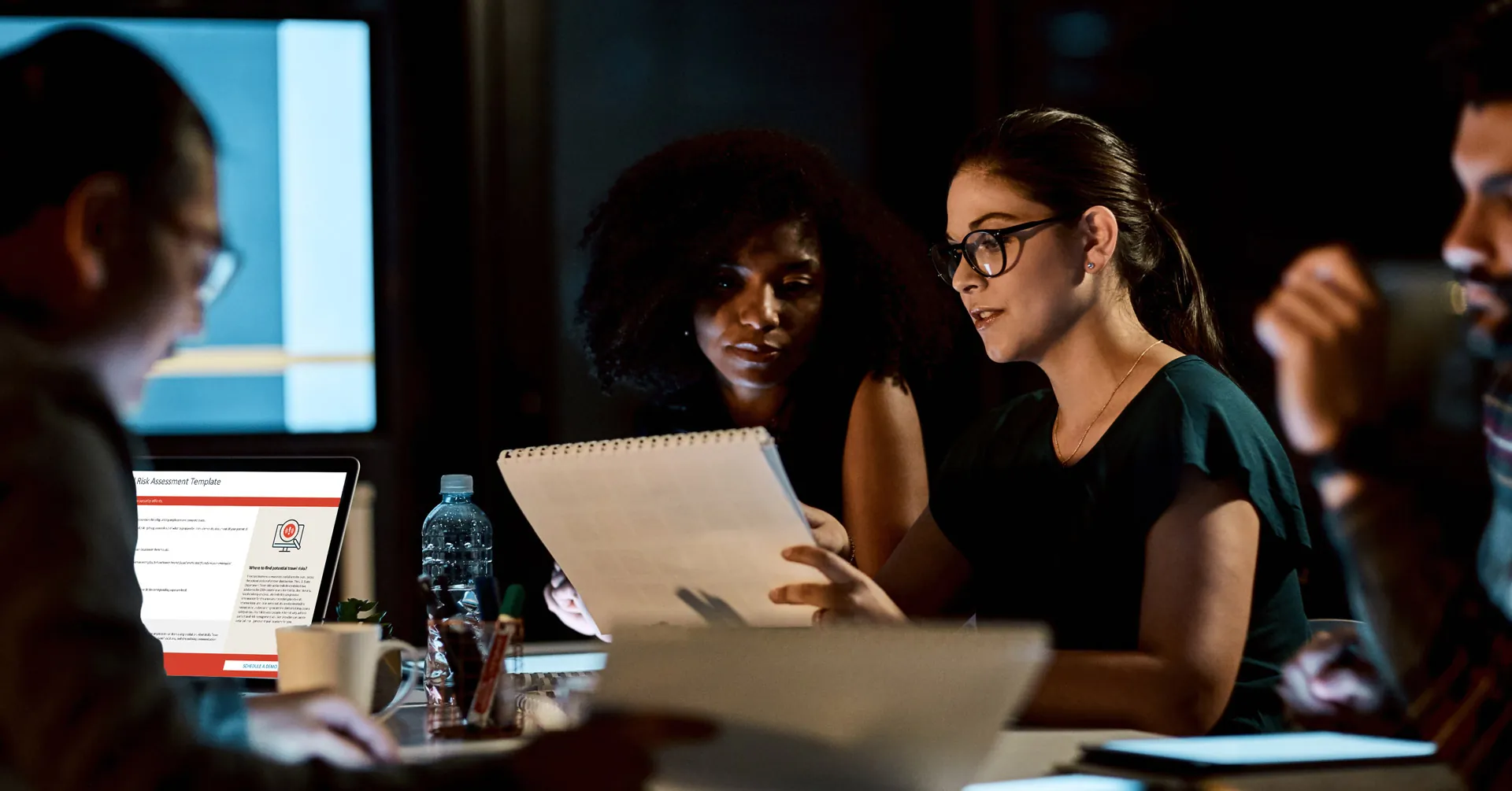
How Valley View Hospital Learns From Disasters
Safety leaders from Valley View Hospital discuss how they manage patient and employee safety in an at-risk environment.

Valley View Hospital is located in a remote, mountainous Colorado town accessible by one major highway. Mudslides, wildfires, and winter weather are prevalent in the area and often shut down the highway for prolonged periods of time, hindering access to the hospital. Despite these challenges, Valley View has remained a cornerstone of the local community, providing critical health services to tens of thousands of residents across Western Colorado.
In a recent episode of The Employee Safety Podcast, two safety leaders from Valley View Hospital— Josh Anderson, Manager of Safety, Security, and Emergency Management, and Stacey Gavrell, Chief Community Relations Officer—joined us to discuss how they manage patient and employee safety in this at-risk environment.
You can listen to the full episode below.
Download Our Hospital Emergency Communication Templates
Q&A With Valley View Hospital’s Safety Leaders
Can you tell our listeners about your location and the types of challenges it creates for you?
Josh Anderson: Valley View is a hospital located in Glenwood Springs, on the western slope of Colorado. It is roughly 5,300 feet above sea level and surrounded by mountainous terrain that is over 8,000 feet. Because of this, we only have two ways in and out of the valley, which presents a number of hazards, both man-made and natural. For example, within the last couple of years, we’ve had rock slides, mudslides, and even some of the largest forest fires in Colorado’s history, only a few miles from our facility.
“"It’s so important to have real-time communication with our safety leaders and medical staff who need the right information to respond in times of emergency."”Stacey Gavrell Chief Community Relations Officer
Can you give us an example of a hazard you’ve faced and how it impacted your employees and patients?
Josh Anderson: Valley View is a hospital located in Glenwood Springs, on the western slope of Colorado. It is roughly 5,300 feet above sea level and surrounded by mountainous terrain that is over 8,000 feet. Because of this, we only have two ways in and out of the valley, which presents a number of hazards, both man-made and natural. For example, within the last couple of years, we’ve had rock slides, mudslides, and even some of the largest forest fires in Colorado’s history, only a few miles from our facility.
Stacey Gavrell: Last year, amid the COVID-19 pandemic, we had the Grizzly Creek Fire just a few miles away from our campus. This wildfire required fast communication to prepare for a myriad of scenarios. We started anticipating the need to evacuate the hospital and make staffing and shift changes. Thankfully, there were incredible teams deployed to the fire, and we were able to get real-time information on the status.
As a public relations officer, it’s my job to feed information to Josh and his team so that we can best prepare our people and facility. Depending on the hazard, the corridor to our hospital may close more than five times a year—for anywhere from four hours to weeks. It’s so important to have real-time communication with our safety leaders and medical staff who need the right information to respond in times of emergency.
With the unique circumstances of your location, are you constantly living and working in a state of hyper-vigilance? What does the day-to-day look like for you?
Stacey: Every day is different, but it’s just about constantly monitoring the environment around us. It’s also about having solid relationships in the community with partners who can give us information. Being able to bring our team together dynamically is also crucial. That gets down to the culture here at Valley View. Having someone like Josh, who can bring people together with his expertise and leadership skills, allows us to remain flexible and work efficiently together. That brings a lot of joy to the work, as opposed to living in paranoia.
What tools or methods of communication do you use now and are they helping improve safety and preparedness at the hospital?
Josh: During disasters, hospitals cannot close their doors. If anything, the public relies more heavily on hospitals in these scenarios. When it comes to employee safety, we use AlertMedia to communicate with our facility of roughly 1,200 employees. I can get helicopters, doctors, and police officers, but I can’t get time. Time is the only resource that we cannot get more of. Still, we combat that [pressure] by using AlertMedia to mobilize our teams and push information out to staff in a timely and effective manner.
In disaster scenarios, the simplest tools can be the most effective. Some key tools for us include our local phone lines and our internal radio system [which we use] in conjunction with first responders.
However, I think our game changed when we adopted AlertMedia. The buy-in from our administration took effect during the COVID pandemic. When nobody knew what was going on, we constantly sent messages to update and inform our staff. The only thing that spreads faster than a virus is fear, and the right communication tools can help combat that fear.
We recently experienced a mudslide that closed westbound I-70, so we sent a message out to our staff using AlertMedia that said, “You can’t get home if you live anywhere west of Glenwood Springs. Press one if you have a place to stay; press two if you don’t.” We had several staff members respond and say, “I’ve got nowhere to go,” so we retrofitted parts of the hospital as makeshift hotel rooms for our employees and their families. Whether it’s geofencing or mass notification, the right tools help us buy more time and keep our people safe.
Tell us about your post-event reporting process. How do you evaluate emergency events and learn from them for the future?
Josh: We perform an after action improvement plan set forth by Homeland Security where we look at our objectives, whether or not we reached them effectively, and if there are areas for improvement. Once we identify areas for improvement, we create action plans, decide who will be responsible for them, and set a target date. There’s follow-through to ensure that—when a fire or mudslide happens again—we have those weak points taken care of.
You can take any after action report, and nine times out of ten, a lack of communication will be on there [as an underlying issue]. Communication is critical because it saves time, allows us to make the correct decisions, and prevents us from backpedaling. With the tools we have in place now, communication is showing up less and less in our after action reports.
What can the audience do today to help improve their emergency preparedness or safety culture?
Stacey: If your organization focuses on the true impacts of at-risk environments on your people, it makes decision-making and investing in communications all the more simple.
Josh: Regarding emergency management, it doesn’t matter if you’re in healthcare, the private or federal industry, or just someone at home—you need to conduct a hazard vulnerability assessment. There are basic templates online you can use, and this assessment will tell you what you’re doing well and what you can improve.
Take two of those hazards and invest in equipment and training for your personnel or yourself related to those hazards. Then, exercise those two hazards that calendar year. Once you feel that you’ve increased your response and recovery capabilities regarding those hazards, do it all over again. Be sure to focus on man-made and technological hazards as well as natural disasters. Finally, always continue to assess what your vulnerabilities are.
Portions of this article have been edited for clarity and brevity.





